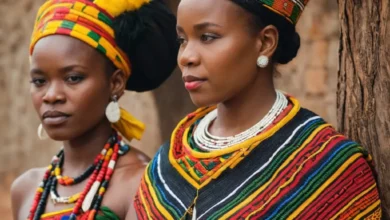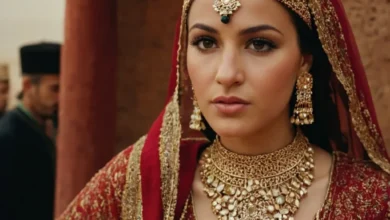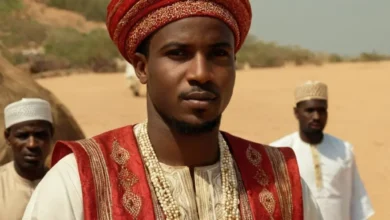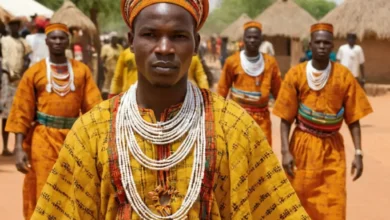Cape Verdean Traditional Clothing
The archipelago of Cape Verde, nestled in the Atlantic Ocean off the coast of West Africa, boasts a rich cultural tapestry woven from threads of African and Portuguese heritage. This blend is vividly reflected in its traditional clothing, a captivating display of vibrant colors, intricate patterns, and unique styles.
This article delves into the fascinating world of Cape Verdean traditional attire, exploring its historical roots, cultural significance, and the diverse array of garments that adorn its people.
A Tapestry of Influences: The Historical Roots
Cape Verdean traditional clothing is a captivating testament to the island nation’s multifaceted history. The archipelago was uninhabited until the 15th century when Portuguese explorers arrived and established settlements. Over time, a unique cultural blend emerged, with African influences deeply entwined with Portuguese traditions.
The indigenous populations of Cape Verde, predominantly from the Guinea-Bissau region, brought with them their own distinctive clothing styles, fabrics, and techniques. The Portuguese, in turn, introduced European fashion trends and materials, adding a layer of complexity and sophistication.
See also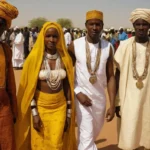 Chadian Traditional Clothing: Adapting to Diverse Climates and Cultural Traditions
Chadian Traditional Clothing: Adapting to Diverse Climates and Cultural Traditions
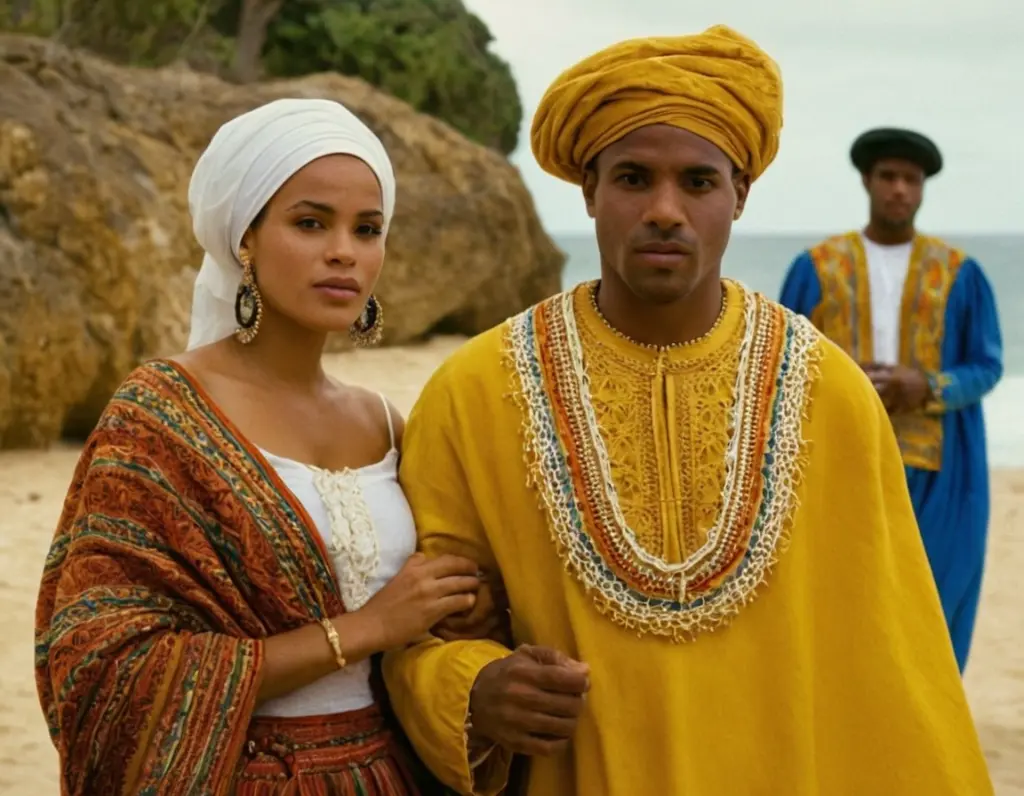
Early Influences: African Traditions
Pre-colonial Cape Verdean clothing was primarily influenced by the indigenous African cultures. These garments were typically crafted from locally sourced materials such as cotton, linen, and leather. Women wore long, flowing gowns called buba or batuk, often adorned with intricate embroidery and beads.
These garments served both practical and symbolic purposes, representing social status, ethnicity, and religious beliefs. Men wore loose-fitting trousers and shirts, often featuring geometric patterns and vibrant hues. The use of natural dyes, derived from plants and minerals, created an array of earthy tones and rich colors.
Portuguese Impact: A Shift in Style
The arrival of the Portuguese introduced a new dimension to Cape Verdean fashion. European fabrics like silk and velvet became readily available, adding an element of luxury and refinement. The Portuguese also brought with them their own sartorial traditions, including the use of lace, embroidery, and formal tailoring.
These influences led to the emergence of new garments, such as the camisola, a lace-trimmed chemise worn by women, and the calças de brim, a pair of denim trousers embraced by men. The influence of Portuguese style is particularly noticeable in the elaborate headwear worn by women, which often incorporates lace, ribbons, and decorative pins.
See also Comorian Traditional Clothing: A Blend of African, Arab, and Islamic Influences
Comorian Traditional Clothing: A Blend of African, Arab, and Islamic Influences
The Cultural Significance of Traditional Clothing
Cape Verdean traditional clothing is more than just attire; it is a powerful symbol of cultural identity, heritage, and pride. Garments are often passed down through generations, carrying with them the stories and memories of those who have worn them before. The intricate details and symbolism embedded in traditional clothing offer glimpses into the values, beliefs, and social structure of Cape Verdean society.
Representing Community and Ancestry
Each island in Cape Verde has its own unique style of traditional clothing, reflecting the diverse regional traditions and influences. These variations serve as markers of community and ancestry, allowing individuals to identify their roots and connect with their heritage.
For example, the taba, a brightly colored headwrap worn by women on the island of Santo Antão, is a distinct symbol of local pride. Similarly, the capelinha, a small, decorative hat worn by men on the island of São Vicente, signifies their cultural heritage.
Celebrating Special Occasions
Cape Verdean traditional clothing plays a central role in celebrating significant life events such as weddings, baptisms, and festivals. These occasions offer an opportunity for individuals to showcase their finest attire, demonstrating respect for tradition and celebrating their cultural heritage. The vibrant colors and intricate designs of traditional garments add a layer of festivity and joy to these special occasions.
Celebrating Identity and Belonging
Beyond the practical and ceremonial aspects, traditional clothing serves as a potent symbol of identity and belonging. For Cape Verdeans, both on the islands and in the diaspora, wearing traditional attire connects them to their cultural roots and provides a sense of pride in their heritage. Traditional clothing serves as a visual reminder of their history, resilience, and the enduring spirit of Cape Verdean culture.
The Diverse Array of Cape Verdean Garments
Cape Verdean traditional clothing is a diverse tapestry of styles and garments, each with its own history, significance, and aesthetic appeal. Here, we explore some of the most prominent and iconic items of Cape Verdean traditional attire.
Women’s Garments
- Buba or Batuk: A long, flowing gown often crafted from cotton, linen, or silk. It typically features a V-neckline, long sleeves, and an A-line silhouette. The buba is adorned with intricate embroidery, beadwork, or decorative trims. It is often paired with a colorful taba (headwrap) or chapéu (hat).
- Camisola: A lace-trimmed chemise worn beneath the buba. The camisola adds an element of elegance and sophistication to the ensemble.
- Saias: Skirts are often worn with the buba. They can be made from a variety of fabrics, including cotton, linen, and lace. The skirts are often adorned with colorful prints or patterns.
- Taba: A brightly colored headwrap that is an essential part of traditional women’s attire. The taba is often worn with intricate braids or hairstyles. It is a symbol of pride, beauty, and identity.
Men’s Garments
- Calças de Brim: Denim trousers, often paired with a long-sleeved shirt or vest.
- Camisola: A long-sleeved shirt, often made from cotton or linen. It typically features a button-down closure and a collar.
- Colete: A vest often worn over a camisola.
- Capelinha: A small, decorative hat often worn on the island of São Vicente. It is a symbol of local pride and heritage.
The Future of Cape Verdean Traditional Clothing
In the 21st century, Cape Verdean traditional clothing faces a new set of challenges and opportunities. The influence of globalization and the increasing prevalence of Western fashion trends pose a threat to the continued practice of traditional dress.
However, there is a growing awareness of the importance of preserving cultural heritage, and young generations are increasingly embracing traditional attire as a means of celebrating their identity and connecting with their roots.
Modern Interpretations and Revival
A number of initiatives are underway to revitalize and modernize Cape Verdean traditional clothing. Fashion designers are incorporating traditional elements into contemporary designs, creating unique and stylish interpretations of classic garments.
Traditional textile techniques, such as weaving and embroidery, are being revived and passed on to younger generations, ensuring the continuity of these crafts. Cultural festivals and events provide opportunities for individuals to showcase their traditional attire, promoting awareness and appreciation for Cape Verdean fashion.
The Role of Education and Awareness
Education plays a vital role in preserving and promoting traditional clothing. Schools and community organizations are incorporating lessons about Cape Verdean culture and traditions, including the history and significance of traditional attire. This education fosters a sense of pride and appreciation for cultural heritage, encouraging younger generations to embrace and celebrate traditional clothing.
The Global Reach of Cape Verdean Fashion
Cape Verdean traditional clothing is gaining recognition on the global stage, as fashion enthusiasts and cultural institutions increasingly acknowledge the beauty and uniqueness of this style. International exhibitions and events showcase the artistry and cultural significance of Cape Verdean fashion, fostering greater appreciation and understanding across cultures.
Frequently Asked Questions (FAQs)
What are some of the most common colors used in Cape Verdean traditional clothing?
The colors most commonly used in Cape Verdean traditional clothing are vibrant and often reflect the natural beauty of the islands. These include vibrant hues like red, blue, yellow, green, and purple. The use of natural dyes, often derived from plants and minerals, contributes to the rich and earthy tones of these garments.
What are some of the key symbols and patterns found in Cape Verdean traditional clothing?
Cape Verdean traditional clothing is adorned with a variety of symbols and patterns that hold cultural significance. Geometric designs, such as triangles, squares, and circles, represent the interconnectedness of life and the universe.
Floral motifs, such as hibiscus and bougainvillea, represent beauty, abundance, and fertility. Other common patterns include stripes, chevrons, and paisley, which often have specific meanings or represent specific communities.
Where can I find Cape Verdean traditional clothing?
Cape Verdean traditional clothing can be found in various places, including:
- Local markets and shops in Cape Verde: The best place to find authentic Cape Verdean traditional clothing is in the local markets and shops of the islands.
- Online retailers specializing in African and Cape Verdean fashion: A growing number of online retailers specialize in African and Cape Verdean fashion, offering a variety of traditional garments and accessories.
- Cultural events and festivals: Cultural events and festivals celebrating Cape Verdean culture often feature vendors selling traditional clothing and crafts.
Conclusion
Cape Verdean traditional clothing is a testament to the rich cultural heritage of the island nation, reflecting the intertwined influences of African and Portuguese traditions. From the vibrant colors and intricate patterns to the symbolic meanings and cultural significance, these garments offer a glimpse into the unique identity and spirit of Cape Verdean society.
As Cape Verdean culture continues to evolve and adapt to a globalized world, the preservation and celebration of traditional attire remains a crucial element in safeguarding cultural heritage and fostering a sense of pride and belonging among Cape Verdeans everywhere.
